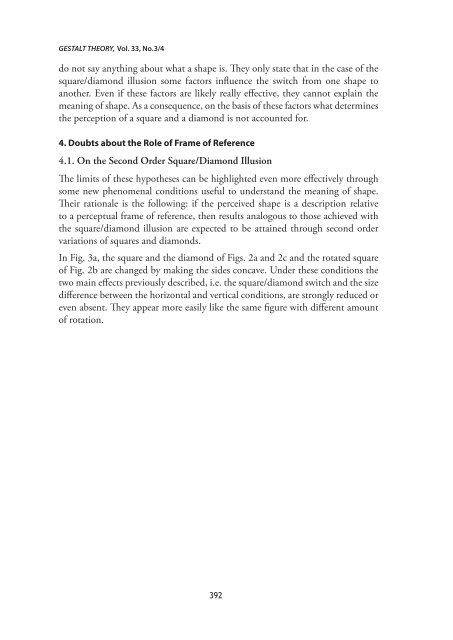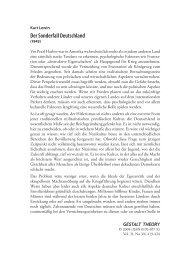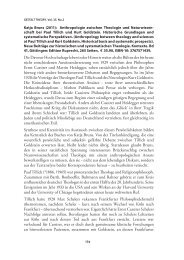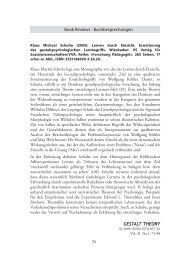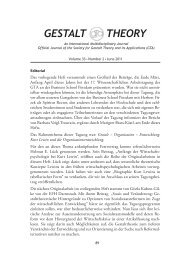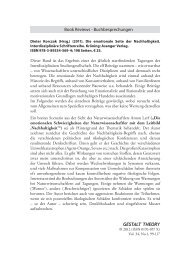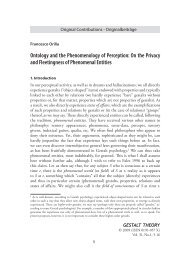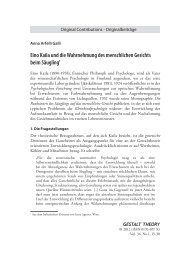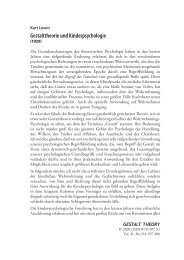What is the Meaning of Shape? - Gestalt Theory
What is the Meaning of Shape? - Gestalt Theory
What is the Meaning of Shape? - Gestalt Theory
You also want an ePaper? Increase the reach of your titles
YUMPU automatically turns print PDFs into web optimized ePapers that Google loves.
GESTALT THEORY, Vol. 33, No.3/4<br />
do not say anything about what a shape <strong>is</strong>. They only state that in <strong>the</strong> case <strong>of</strong> <strong>the</strong><br />
square/diamond illusion some factors influence <strong>the</strong> switch from one shape to<br />
ano<strong>the</strong>r. Even if <strong>the</strong>se factors are likely really effective, <strong>the</strong>y cannot explain <strong>the</strong><br />
meaning <strong>of</strong> shape. As a consequence, on <strong>the</strong> bas<strong>is</strong> <strong>of</strong> <strong>the</strong>se factors what determines<br />
<strong>the</strong> perception <strong>of</strong> a square and a diamond <strong>is</strong> not accounted for.<br />
4. Doubts about <strong>the</strong> Role <strong>of</strong> Frame <strong>of</strong> Reference<br />
4.1. On <strong>the</strong> Second Order Square/Diamond Illusion<br />
The limits <strong>of</strong> <strong>the</strong>se hypo<strong>the</strong>ses can be highlighted even more effectively through<br />
some new phenomenal conditions useful to understand <strong>the</strong> meaning <strong>of</strong> shape.<br />
Their rationale <strong>is</strong> <strong>the</strong> following: if <strong>the</strong> perceived shape <strong>is</strong> a description relative<br />
to a perceptual frame <strong>of</strong> reference, <strong>the</strong>n results analogous to those achieved with<br />
<strong>the</strong> square/diamond illusion are expected to be attained through second order<br />
variations <strong>of</strong> squares and diamonds.<br />
In Fig. 3a, <strong>the</strong> square and <strong>the</strong> diamond <strong>of</strong> Figs. 2a and 2c and <strong>the</strong> rotated square<br />
<strong>of</strong> Fig. 2b are changed by making <strong>the</strong> sides concave. Under <strong>the</strong>se conditions <strong>the</strong><br />
two main effects previously described, i.e. <strong>the</strong> square/diamond switch and <strong>the</strong> size<br />
difference between <strong>the</strong> horizontal and vertical conditions, are strongly reduced or<br />
even absent. They appear more easily like <strong>the</strong> same figure with different amount<br />
<strong>of</strong> rotation.<br />
392


